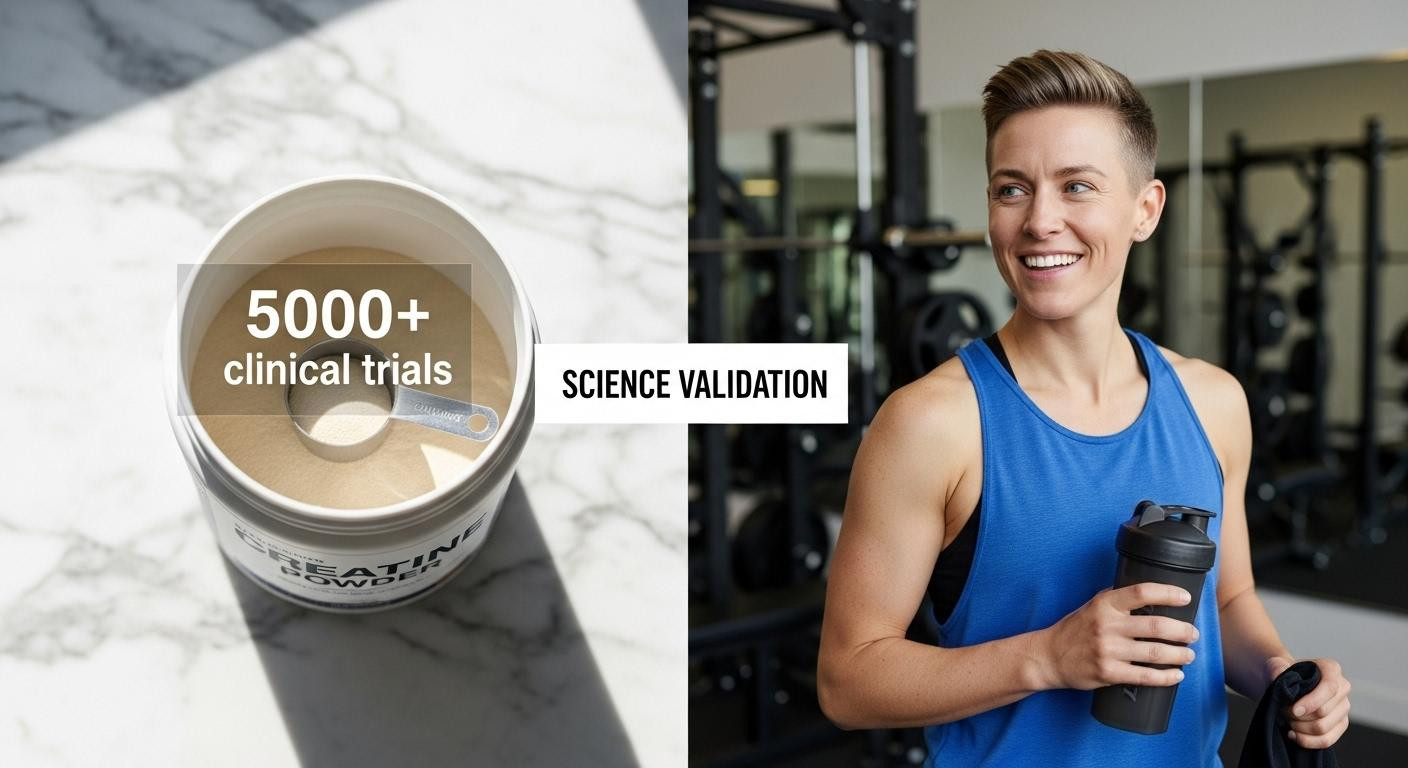You stare at the creatine container on your kitchen counter. Your phone buzzes with another horror story about kidney failure. Yet 685 clinical trials involving over 25,000 participants reveal something shocking. Side effect rates between creatine and placebo are nearly identical: 13.7% versus 13.2%. Science proves you’ve been wrong about creatine dangers, but for understandable reasons.
Myth demolished – creatine does NOT destroy your kidneys
The kidney damage myth stems from a single 1998 case report that grabbed headlines but lacks scientific merit. This persistent fear has terrorized gym-goers for decades despite overwhelming evidence to the contrary.
Research using gold-standard kidney function testing shows zero evidence of renal harm in healthy individuals. Studies spanning 5-20 grams daily for up to 24 months across diverse populations – resistance-trained males, postmenopausal women, diabetic adults, even youth with lupus – demonstrate no detrimental kidney effects.
Sports scientists studying creatine supplementation confirm the distinction between serum creatinine elevation and actual kidney damage. Creatinine levels may rise temporarily as a normal metabolic response, but this doesn’t indicate organ dysfunction. Clinical laboratories often misinterpret this elevation, leading to unnecessary chronic kidney disease diagnoses.
Dehydration risk exposed as fiction with proper hydration
The cramping and dehydration myth emerged from theoretical concerns about creatine drawing water into muscle cells. Real-world data tells a different story entirely.
What clinical trials actually reveal about hydration
Muscle cramping affected just 0.52% of creatine users versus 0.07% taking placebo – statistically insignificant differences. The mechanism actually protects against dehydration by increasing intracellular water retention and improving cellular hydration status during exercise.
Multiple studies measuring urine specific gravity and plasma osmolality show no negative impact on overall hydration. The key lies in adequate fluid intake, which most athletes already maintain.
The real cramping culprits revealed
Exercise physiologists confirm that cramping typically results from inadequate hydration independent of supplementation, electrolyte imbalances, or excessive training loads. Creatine users who experience issues usually consume insufficient water or exceed recommended doses without proper timing protocols.
Hair loss claims crushed by 16 years of research
This viral misconception traces back to a single 2009 study measuring DHT levels in 20 rugby players. The research never assessed actual hair loss and hasn’t been replicated in over 15 years of subsequent investigation.
Where the baldness myth originated
The original study showed temporary DHT increases during creatine loading but provided no evidence of follicle damage or accelerated hair loss. Social media amplified these findings far beyond their scientific scope, creating widespread fear without basis.
Meta-analysis demolishes dermatological concerns
Analysis of 28.4 million adverse event reports reveals creatine mentions in just 0.00072% of cases, with 63% involving other supplements or medications. No systematic review from 2015-2025 has found evidence linking creatine to hair loss, acne, or other skin conditions. Performance athletes using creatine long-term show no increased dermatological issues.
The 3 real side effects science confirms
Honest analysis reveals only minor, manageable effects that affect small percentages of users and remain far from catastrophic online predictions.
Mild GI distress occurs in 5.51% of users versus 4.05% taking placebo – barely different rates. Initial water weight gain of 2-4 pounds represents increased lean muscle mass, not fat accumulation. Occasional bloating affects fewer than 3% of users.
Certified trainers recommend splitting doses to 3-5 grams twice daily with meals to minimize stomach upset. Starting with maintenance doses instead of loading phases reduces initial discomfort while achieving identical long-term benefits.
Performance gains justify minimal risk profile
While myths persist on social platforms, research consistently demonstrates 8-15% strength increases, 5-10% power output improvements, and enhanced recovery between high-intensity efforts. Cognitive function during fatigue also improves significantly.
Nutrition specialists emphasize that creatine monohydrate remains the most researched sports supplement in history. Quality products cost $0.04-$0.06 per serving, making it among the most cost-effective performance enhancers available to athletes.
Your questions about creatine side effects answered
Is creatine safe for women over 40?
Yes – studies include diverse demographics across age groups and genders. Research on postmenopausal women with osteoarthritis and fibromyalgia shows excellent safety profiles. No hormonal disruption occurs, making it ideal for muscle maintenance during perimenopause.
Can I take creatine with high blood pressure?
Clinical trials report no cardiovascular adverse events linked to creatine supplementation. Blood pressure medications show no negative interactions, though consulting healthcare providers remains wise for comprehensive management strategies.
Who should avoid creatine according to current research?
Only specific populations require caution: individuals with diagnosed kidney disease, pregnant or breastfeeding women due to insufficient safety data, and people with bipolar disorder taking lithium medications. These represent exceptions, not blanket warnings for healthy adults.
You confidently scoop creatine into your shaker bottle, knowing 685 studies back this choice. At $0.04 per serving, this scientifically-proven supplement offers unmatched value. The difference between creatine and placebo – 13.7% versus 13.2% – represents statistical noise, not danger.
